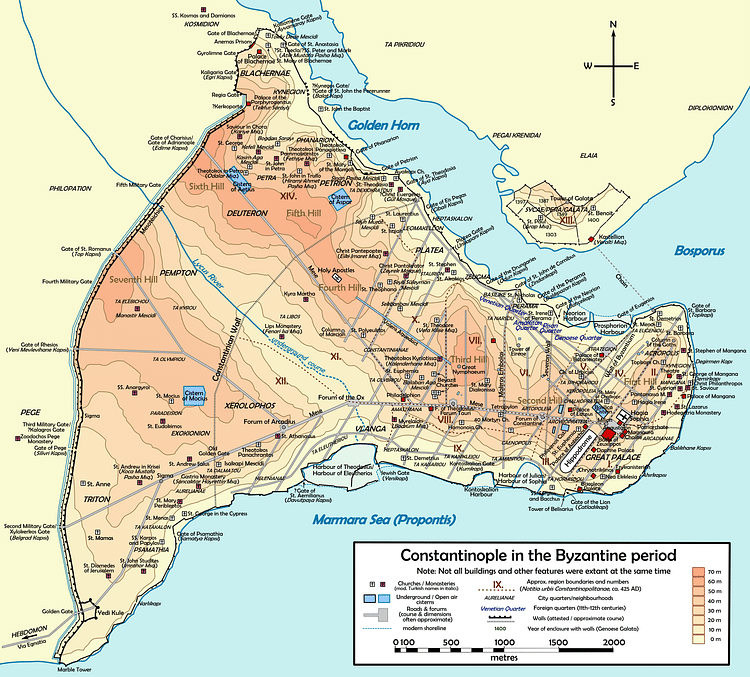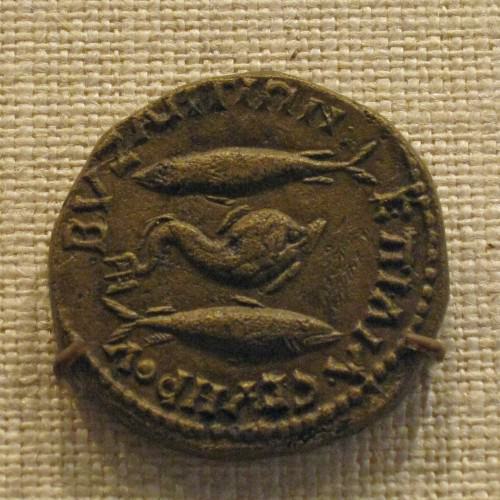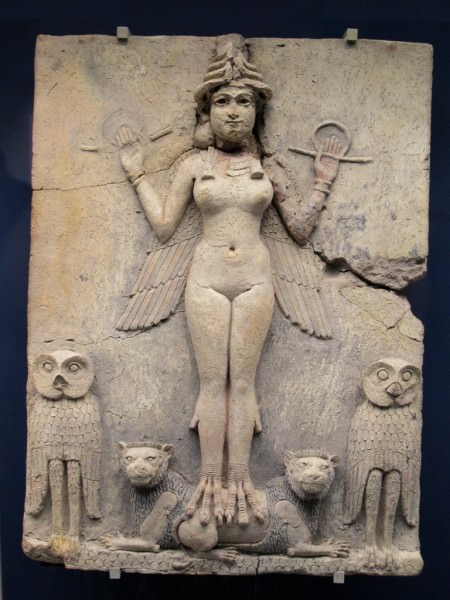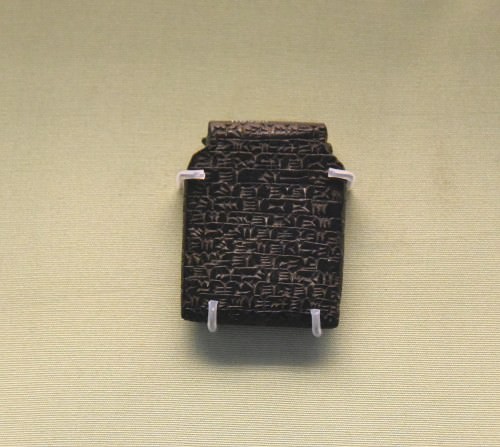Byzantium › Nergal » Ancient origins
Articles and Definitions › Contents
- Byzantium › Antique Origins
- Nergal › Who Was
Ancient civilizations › Historical and archaeological sites
Byzantium › Antique Origins
Definition and Origins

The ancient city of Byzantium was founded by Greek colonists from Megara around 657 BCE. According to the historian Tacitus, it was built on the European side of the Strait of Bosporus on the order of the “god of Delphi ” who said to build “opposite the land of the blind”. This was in reference to the inhabitants of Chalcedon who had built their city on the eastern shore of the Strait; the west side was considered far more fertile and better suited for agriculture. Although the city accepted the alphabet, calendar and cults of Megara, much of the city's founding still remains unknown. The region would remain important to the Greeks as well as the Romans. While it lay in a highly fertile area, the city was far more important due to its strategic location. Not only did it stand guard over the only entrance into the Black Sea but it also lay by a deep inlet --- The Golden Horn --- meaning the city could only be attacked from the west..
Because of its location the city became the center of the continued war between the Greeks and Persians. During the Greek and Persian Wars, the Byzantines initially supported Darius I in his Scythian campaign providing him with ships, but turned against him later. Darius destroyed the city, making the entire area part of the Achaemenid Empire in 513 BCE. During the Ionian Revolt, Greeks forces captured the city but were unable to maintain control, losing it to the invading Persians. Many of the residents of both Byzantium and Chalcedon fled, fearing reprisals from the Persians. The Spartan general, Pausanias, victorious against the Persians at Plataea in 478 BCE, traveled northward and conquered the city, becoming its governor. With the Persians so close, he made peace with the Persian king Xerxes, possibly offering to help the Persians to conquerGreece. He remained Byzantine governor until 470 BCE when he was recalled by the Spartans.
ALTHOUGH AN ALLY OF THE ROMAN EMPIRE AND IN MANY WAYS BECOMING VERY ROMANIZED, BYZANTIUM REMAINED FAIRLY INDEPENDENT.
Throughout the Peloponnesian War between Sparta and Athens, the area had split loyalties. The Athenians wanted to control Byzantium because they needed to import grain through the Strait from the Black Sea, and the Spartans wanted the city to stop the grain flow to Athens. Its prosperous economy benefited Athens, and because of this the city had been made part of the Delian League ; however, the high tributes the city had to pay to Athens --- and the fact that Athens was losing the war --- forced them to switch sides to Sparta in 411 BCE. The Spartan general Clearchus easily seized the city. This switch allowed Sparta to stop vital grain shipments through the Strait to Athens. When the Athenian leader Alcibiades outwitted the Spartans in battle in 408 BC, Clearchus abandoned the city, and the area again became Athenian. Later, however, Sparta regained control when Lysander defeated the Athenians in 405 BCE. This final defeat cut off the Athenian food supply, forcing them to surrender to Sparta in 404 BCE, thereby ending the Peloponnesian War. The following year Byzantium faced a threat from the Thracians to the west and sought help of Sparta who took control of the city. Around 390 BCE the city changed hands again when the Athenian general Thrasybulus ended Spartan power.
In 340 BCE Phillip II of Macedonia laid siege to Byzantium. The city had initially contacted Phillip when threatened by Thrace;however, when they refused to side with Phillip and turn against Athens, he attacked but soon retreated after the Persian army threatened war. His son, Alexander the Great, understood the strategic value of the city and annexed the area when he moved across the Bosporus into Asia Minor on his way to defeat Darius III and conquer the Persian Empire. The city would regain its independence under his more feeble successors. Byzantium continued to exert control over trade through the Strait, but when the island of Rhodes refused to pay the exorbitant fees, war erupted. The war was quickly settled, and the city agreed to reduce its harsh policies.

Bronze Coin of Byzantium
Although becoming an ally of the Roman Empire and in many ways becoming very Romanized, Byzantium remained fairly independent, acting as a stopping off point for Roman armies on their way to Asia Minor. The fishing, agriculture, and tributes from ships passing through the Strait made it a valuable source of income for Rome. In 192 AD after Emperor Commoduswas assassinated, a war emerged over who would succeed him. When the city refused to support Septimus Severus, supporting Pescennius Niger of Syria instead, the future emperor laid siege and destroyed the city. He would later regret his actions --- due to the influence of his son Caracalla ---and rebuild it,
When Emperor Diocletian divided the Roman Empire into his tetrachy (rule by four), Byzantium fell into the eastern half, ruled by Diocletian. The Emperor Constantine came into power in the western half in 312 AD and would soon reunite the empire when he defeated Licinius at the Battle of Chrysopolis in 324 AD. He would build his new capital on the site of ancient Byzantium, New Rome; it would become the cultural and economic center of the east. Upon Constantine's death in 337 CE, the city would be renamed Constantinople in his honor. Although the city maintained it role as an important part of the Byzantine Empire, it would be invaded and captured by the Ottoman Turks In 1453. For further information refer to the definition on Constantinople.
Nergal › Who Was
Definition and Origins

Nergal (also known as Erra and Irra) is the Mesopotamian god of death, war, and destruction. He began as a regional, probably agricultural, god of the Babylonian city of Kutha in the Early Dynastic Period (c. 2900-2700 BCE). As his templewas known as E-meslam, he was known as Meslamtaea ('he who comes forth from Meslam'). He was still associated with death even at this early period as he represented the high summer sun which scorched the earth, and the afternoon sun of most intense heat, which hindered crop production.
The destructive power of the sun was thought to be a manifestation of Meslamtaea's intense fury and he became associated with war, pestilence, and death, transforming into the universal god known as Nergal by the time of the Ur III Period (2047-1750 BCE). Nergal of Kutha shared many similarities with another god who seems to have developed independently, Erra (or Irra) of Babylon. Scholar Jeremy Black notes that "the gods Nergal and Erra were originally separate deities, but later became so closely identified as to lose their independent characters" (135). Their names are eventually used interchangeably and today they are recognized as the same deity.
Negal is represented in iconography as a man striding, in long robes, with his advancing foot crushing a human figure. He holds a mace topped by a double lion's head and carries a scimitar. Iconography also associates him with the lion and the bull, two animals which represented enormous natural and supernatural power in Mesopotamia.
He was the son of Enlil and Ninlil though he is also referred to as the son of Belet-ili (another name for Nintud/Nintur/ Ninhursag, the mother goddess who created human beings). Nergal is associated with a number of wives/consorts including the minor deity Las; another regional goddess Mammi (or Mami, but not associated with Mamma, another name for Ninhursag); Ninshubur (goddess of the east, and friend, advisor, and confidante of Inanna ); and Ereshkigal, Queen of the Dead and ruler of the underworld.
NERGAL SERVED AS THE REASON BEHIND THE SEEMINGLY UNREASONABLE. HE PROVIDED A WAY FOR PEOPLE TO MAINTAIN THEIR FAITH IN THEIR GODS & EXPLAIN THE AGE-OLD PROBLEM OF SUFFERING.
Although a destructive entity, Nergal was frequently invoked for protection and is associated with similar gods in other cultures such as Ninurta, the Sumerian/Akkadian god of war and hunting, the Hurrian/ Hittite Aplu, god of the plague, Ares, war god of the Greeks, and the Roman war god Mars. He features prominently in a number of Mesopotamian myths and is mentioned in the Bible in II Kings 17:30. His name is interpreted as "dunghill cock" and his various epithets all have to do with destruction and war such as "raging king," "furious king," "fighting cock," and "the burner."
His main cult center was Kutha, but from there, his worship spread and temples were built to honor him throughout southern Mesopotamia at Ur, Uruk, Lagash, Isin, Nippur, and Dilbat, he was also honored at Babylon, and adopted by the Assyrians.Once he was associated with the underworld he became a central deity in the Cult of the Dead in which priests would offer sacrifice to the god for the souls in the underworld.
CHARACTER & PURPOSE
Sometimes invoked for relief or assistance, Nergal mainly symbolizes the destructive force in human nature and the natural world. Striding with his mace and scimitar, he destroys without thought or apparent reason and is never shown feeling remorse or regret. Black notes how Nergal lays waste to Babylon in one story "apparently because destruction is simply in his nature, rather than to punish sin" (136). Nergal's destruction of Babylon is not an isolated case of him acting on impulse, however, as he was known to rampage at will on a regular basis and explain himself to the other gods simply by citing his very bad temper.Nergal's temper and lack of self-control provided meaning for otherwise meaningless suffering. Scholar Yagmur Heffron explains:
Nergal represents a very particular aspect of death, one that is often and rightly interpreted as inflicted death, for Nergal is also the god of plague and pestilence as well as being closely associated with warfare...In his aspect of a war god, Nergal accompanies the king into battle, delivering death to the enemy. Death brought on by Nergal also had a supernatural dimension, disease often being attributed to demonic agency in Mesopotamia. (1)
The gods were believed to have created human beings as co-workers with them in maintaining universal order and holding at bay the forces of chaos. Plague, pestilence, famine, war, all would seem to contradict the benevolent aspect of the Mesopotamian deities and their cosmic plan, but gods like Nergal helped to make human suffering understandable. Although the gods might collectively have only the best of intentions for people, evil spirits, demons, and a deity like Nergal might interfere with their plans and visit death and destruction on a community. This concept is illustrated in the story The Wrath of Erra (c. 800 BCE) in which Nergal destroys Babylon for no good reason.
THE WRATH OF ERRA
In this myth, Nergal (given as Erra) is feeling lethargic and dull. Scholar Stephen Bertman notes how "even his weapons, gathering dust in storage, complain. Their rebuke rouses him from inertia and he decides, contrary to [his vizier] Ishum's counsel, to attack Babylon" (161). This will not be an easy task, however, because Babylon is under the direct protection of the mighty god Marduk. Erra travels to Babylon pretending a friendly visit and, upon arrival, feigns shock at how poorly Marduk is dressed. He tells the god that he really should do something about his wardrobe because he appears shabby. Marduk, embarassed, claims that he knows he should get some new clothes but is just too busy and has no time. Erra then offers to watch over the city while Marduk goes to his tailor for a new suit of clothes, and Marduk gratefully accepts.

The Wrath of Erra
Once Marduk is safely out of the way, Erra unleashes his wrath on the city. People are slain in the streets as buildings and walls crumble. Bertman writes, "once again, Ishum counsels prudence, but to no avail. Young and old are put to death, fathers bury their sons, and the righteous perish together with the wicked" (161). Once Erra is satisfied that enough have died, he stops the carnage and offers a prophecy that some day a great leader will come to unify the people and protect them;obviously, however, it was not this day.
Erra is called before the gods to explain himself but offers no apology or reason. Bertman writes:
Now in the company of the other gods, Erra justifies his actions as simply an expression of the kind of god he is ("When I get angry, I break things!"). Ishum then prophesies that, thanks to Erra's restraint, a remnant will remain that will eventually flourish anew. The poem concludes with a paean of praise for Erra, god of war. (161)
The myth gives a reason for otherwise inexplicable suffering. According to Jeremy Black, "the mythical narrative may mirror invasions of the country between the twelfth and ninth centuries BCE by tribal, nomadic peoples such as the Aramaeans or Suteans" (136). Nergal served as the reason behind the seemingly unreasonable. If the gods were really in control, and had humanity's best interests at heart, then there should be no suffering and yet, obviously, people suffered loss and death and disappointment regularly. Nergal provided a way for people to maintain their faith in their gods and explain the age-old problem of suffering. The gods are unable to understand Nergal's actions in the story any better than mortals are. They do care for their creations, however, as another myth makes clear.
THE MARRIAGE OF ERESHKIGAL & NERGAL
The myth of The Marriage of Ereshkigal and Nergal (also known simply as Ereshkigal and Nergal ) dates from before the 15th century BCE. A copy was found among the Amarna Letters of Egypt, and a later one, from the 7th century BCE, at the Sultantepe site in modern Turkey (which was once an Assyrian city). An even later copy comes from the Neo-Babylonian Period (c. 626-539 BCE), and this is the most complete and the best known. The story shows Enki, the god of wisdom and creator of humanity, manipulating events to minimize Nergal's destruction: he will send him to Ereshkigal, who will hold him in the underworld. Although the myth resonates on many levels and can be interpreted in many ways, Enki's involvement in the events is pivotal, and it seems his main purpose is in trying to control Nergal.
The myth relates how, one day, the gods prepared a great banquet to which everyone was invited. Ereshkigal could not attend, however, because she could not leave the underworld and the gods could not descend to hold their banquet there because they would afterwards be unable to leave. Enki sends a message to Ereshkigal requesting a servant come from her palace to bring her back a share of the feast. Ereshkigal sends her son Namtar who, unlike she, can freely come and go from the realm of no return.

Queen of the Night
When Namtar arrives at the gods' banquet hall, they all rise from their seats out of respect for his mother, except for Nergal.Namtar is insulted and wants Nergal punished, but Enki tells him to simply return to the underworld and tell his mother what happened. When Ereshkigal hears of Nergal's disrespect she commands Namtar send a message back to Enki demanding that Nergal be sent so she can kill him.
Enki and the other gods consider this request and recognize Ereshkigal's rights, and so Nergal is told he must journey to the underworld. Enki has understood this would happen, of course, and provides Nergal with fourteen demon escorts to assist him at each of the seven gates of the underworld. When Nergal arrives, his presence is announced by the gatekeeper Neti, and Namtar tells his mother that the god who would not rise has come. Ereshkigal gives orders that he is to be admitted through each of the seven gates, which should then be barred behind him, and she will kill him when he reaches the throne room.
After passing through each gate, however, Nergal posts two of his demon escorts to keep it open and marches to the throne room, where he overpowers Namtar and drags Ereshkigal to the floor. He raises his great axe to cut off her head, but she pleads with him to spare her, promising to be his wife and share her power with him. Nergal consents and the poem ends with the two kissing and promising that they will remain together.
War, death, and destruction are simply a part of the human experience, however, and so Nergal cannot stay in the underworld permanently. Enki provided for his ability to leave the underworld by giving him the demons who kept the gates open for him.He will have to leave Ereshkigal for six months out of the year and roam the upper world. The story explained, on a simple scale, why wars were only fought in seasons, but more importantly, it showed the goodwill of the gods in Enki's efforts to contain the war god and spare humanity even if he could not hold Nergal in the underworld forever.
NERGAL AS PROTECTOR & DESTROYER
In spite of (or because of) his destructive tendencies, Nergal was often invoked as a protector. Whether he was with Ereshkigal in the underworld or roaming the earth, he could be called upon to battle evil demons and spirits. He was especially called upon for exorcisms and is mentioned in a number of prayers and incantations. If someone fell ill or thought they or a loved one was otherwise afflicted by an evil spirit, they would go to a priest who would cure them through spells and incantations. One of these, from Babylonia, reads:
I am the priest of Ea. I am the magician of Eridu. Shamash is before me, Sin is behind me. Nergal is at my right hand, Enurta is at my left hand. When I draw near the sick man, when I lay my hand on his head, may a kindly Spirit, a kindly Guardian, stand at my side!Whether thou art evil Ghost, or evil Devil, or evil God, or evil Fiend, or sickness, or death, or a Phantom of Night, or a Wraith of the Night, or fever, or deadly pestilence, get thee gone from before me; go forth from the house. (Wallis Budge, 118)
All of the gods invoked were powerful forces: Ea, god of wisdom; Shamash, the sun god; Sin, the moon god; and Enurta (another name for Ninurta), god of war and hunting; but Nergal is given prominence at the priest's right hand.

Mesopotamian Amulet Against Plague
Nergal's protective aspect was so powerful, however, precisely because he personified the power of destruction. He was known to the Hittites as Aplu, god of plague, and is frequently referenced toward the end of the reign of the Hittite king Suppiluliuma I (1344-1322 BCE). Aplu/Nergal was held responsible for the plague which swept the region from Egypt through the lands of the Hittites, killing even the great king Suppiluliuma I. Prayers to Aplu/Nergal for salvation from the plague would have gone unheeded as one was praying for help to the cause of one's suffering. In cases such as the plague, Nergal might be called upon to stop his rampage, but it was unlikely he would pay any heed until he was satisfied with the death toll.
For this reason, in spite of his protective abilities, Nergal was defined by his more negative aspects. His destructive nature and association with the underworld and death came to define him for the later religion of Christianity where his iconography and character were associated with the devil. Like the god Set of the Egyptians, Nergal was associated with the color red and with the forces of chaos which resisted the good will of the heavens; attributes associated with the later Judeo-Christian vision of God's adversary.
LICENSE:
Article based on information obtained from these sources:with permission from the Website Ancient History Encyclopedia
Content is available under License Creative Commons: Attribution-NonCommercial-ShareAlike 3.0 Unported. CC-BY-NC-SA License